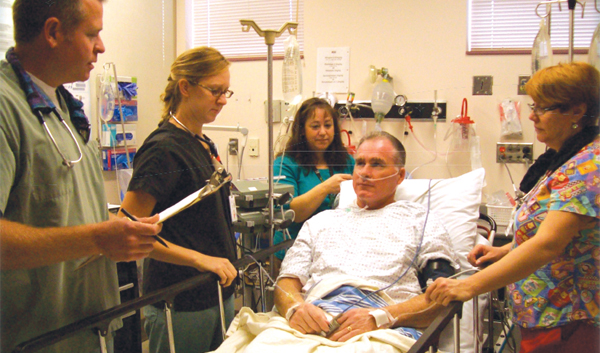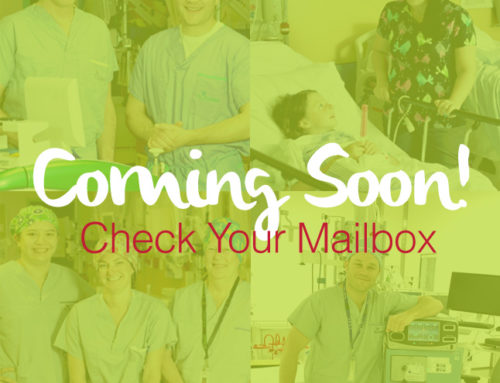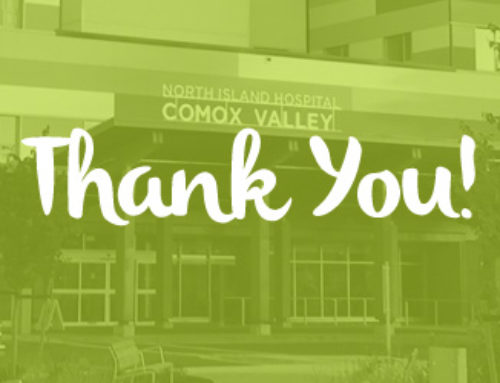
St. Joseph’s General Hospital is proud of its 98 years of continuous service to the residents of the Comox Valley and surrounding areas. While there is considerable excitement and anticipation with the prospect of a new Hospital, at the same time we must assume the current healthcare needs are met.
“Our goal is to assure quality of care is met and enhanced until such time as a new Hospital is built” says Jane Murphy – St. Joseph’s Chief Executive Officer. “St. Joseph’s has a number of years in which it must maintain the current services and grow with the times in terms of medical technology and services. Among those services there is the always pressing need to enhance and update equipment in order to meet the needs of a population that is both growing and demographically aging” says Jane Murphy.
What this means is that support from members of the community will continue to be vitally important now more than ever. Such support, both moral and financial, will help sustain and enhance quality health care for the whole community.
As the population of the community continues to grow and the primary demographic for growth is in the age group 65+ then it is natural that cardiac care concerns assume major prominence. While there has been a welcome decline in cardiac-related deaths over the past few years, due in part to lifestyle alterations, but also due to vast improvements in cardiac diagnosis, care and technology. Heart disease remains a leading health concern for an aging population. The leading cause of hospitalization in Canada continues to be heart disease and stroke, accounting for 16.9% of total hospitalizations (19.8% of all hospitalizations for men and 14% for women). Heart disease is also the second leading cause of death in Canada, according to 2010 statistics, at 22% of deaths, and with stroke connected to 6% of deaths from all causes.
Only too aware of this is Dr. Jason Wale – St. Joseph’s General Hospital Emergency Room Director for it is here that patients in cardiac distress come into first contact with the expert professional skills of the medical and critical care staff and it is here, in the diagnostic realm, where time is of life-saving importance that immediate and precise diagnostic equipment access is paramount. “We work in a community ER that services over 80,000 people,” says Dr. Wale. “Although cardiac problems affect all ages from children to the elderly, we see a large number of patients that are elderly. Many heart conditions are time-dependent because if your heart is not pumping blood properly your brain and other organs are at risk.” For acute myocardial infraction we will often give thrombolytic drugs to open up blocked vessels. In this scenario time is heart muscle and minutes matter.
Having access to more ECG machines mean there will not be a delay in this crucial step of diagnosis to allow early “door to needle time”. Standard of care is less than 30 min.
The essential nature of the latest cardiac equipment in looking out for the lives of the patient becomes apparent as Dr. Wale continues “For some heart diseases the electrical conduction of the heart becomes compromised,” he says. “The heart rate (HR) can drop to 30 beats per minute or even lower. This can result in very low blood pressure and again underperfusion of organs including the brain and heart itself. If not treated quickly it can deteriorate into a chaotic heart rhythm (ventricular fibrillation) and result in death. External pacers are used in the ER to temporarily pace the heart at a higher rate. Temporary pacers can be inserted near the heart through a vein and hooked up to a pacing unit that is sent with the patient to Victoria where the cardiac surgeons leave them in place until a permanent pacemaker is put in surgically.”
“Cardiac care is high tech,” Claire Hilscher, Director of Laboratory Services says “and it’s all about teamwork. Cardiac care related tests are performed in the Emergency Room, Out-patient lab areas, Telemetry and the ICU and then these results are recorded and this record of the patient record can go to other hospitals if he or she has to go elsewhere for specialist services,” she says.
Some of the equipment needed in these departments include 2 ECG machines, 2 Holter monitors, 15 infusion pumps, 24 hour blood pressure monitor and 2 external pacemakers. The goal over the next year is to raise $200,000 for this equipment that’s needed.
Demand keeps growing as the population increases and ages. The need for cardiac care related tests that include, in-patient, out-patient and emergency room testing has increased from 14,203 to 16,840 over the past two years. This shows an increase of 2637 cardiac care tests. St. Joseph’s is here to address the growing need for medical care in all departments. This is where you the members of the Comox Valley public come in. Community support is far-reaching and simply put our needs cannot be met in terms of providing optimum service without your help. In that regard you are invited to help the hospital and the Foundation keep pace with the community’s evergrowing healthcare needs.
A one time annual donation of any amount would make a significant difference in meeting the hospital’s needs. Or, you may wish to consider monthly giving. It’s easy and convenient. Just state how much you would like to give each month and the Foundation will take care of the rest. Those that donate will receive one consolidated tax receipt each February to cover all monthly gifts. Furthermore, you can change, hold or cancel your donations any time by just giving a call.
Thank you for supporting St. Joseph’s General Hospital Foundation. Your support will help the many patients young and old that come to St. Joseph’s each day for care.






Leave A Comment